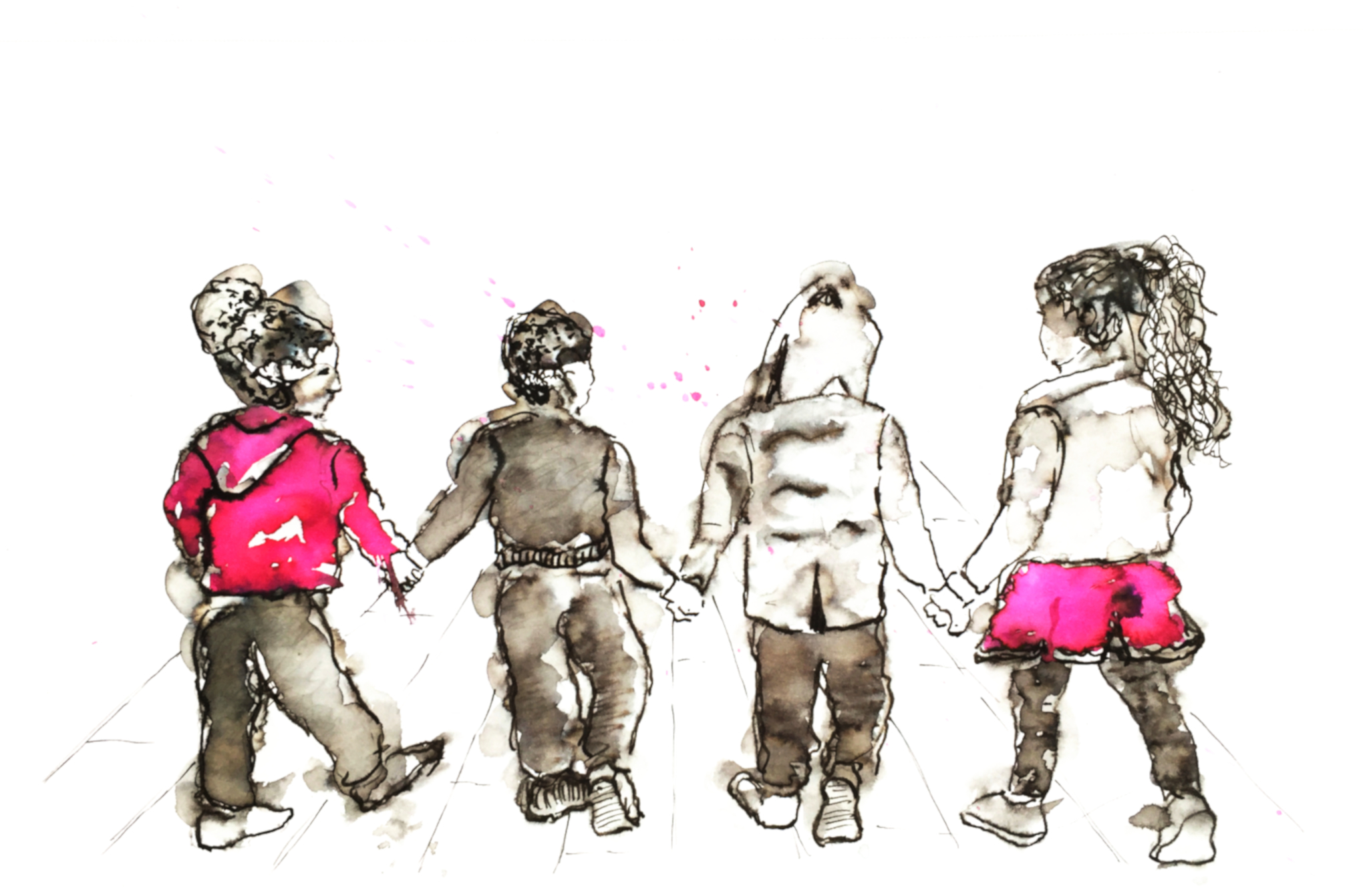People want to know: Can empathy be taught? People complain and authentically struggle: I just don’t get it—or have it. In spite of the substantial affirmative evidence already cited, the debate continues.
The short answer is: Yes, empathy can be taught.

The one-minute empathy training – illustration (c) Alex Zonis
The one minute empathy training is: most people are naturally empathic. Remove the obstacles to empathy and empathy comes forth.
Remove the resistances to empathy and empathy expands.
Eliminate the obstacles to empathy and a space of acceptance and toleration spontaneously comes froth.
What happens is that people unwittingly have been taught to suppress their empathy. People have been taught to conform, follow instructions, and do as they are told. We are taught in first grade to sit in our seats and raise our hands to be called on and speak. And there is nothing wrong with that. It is good and useful at the time. No one is saying, “Leap up and run around yelling” (unless it is summer vacation!). But compliance and conformity are trending; and arguably the pendulum has swung too far from the empathy required for communities to work effectively for everyone, not just the elite and privileged at the top of the food chain.
Now do not misunderstand this: people are born with a deep and natural capacity for empathy, but they are also born needing to learn manners, respect for boundaries, and toilet training. Put the mess in the designated place or the community suffers from diseases. People also need to learn how to read and do arithmetic and communicate in writing. But there is a genuine sense in which learning to conform and follow all the rules does not expand our empathy or our community. It does not help the cause of expanded empathy that rule-making and the drumbeat of compliance are growing by leaps and bounds.
Teaching empathy consists in overcoming the obstacles to empathy that people have acquired. When the barriers are overcome, then empathy spontaneously develops, grows, comes forth, and expands. There is no catch, no “gotcha.” That is the one-minute empathy training, pure-and-simple.
The work at hand? Remove the blocks to empathy such as dignity violations, devaluing language, gossip, shame, guilt, egocentrism, over-identification, lack of integrity, inauthenticity, hypocrisy, making excuses, finger pointing, jealousy, envy, put downs, being righteous, stress, burnout, compassion fatigue, cynicism, censorship, denial, manipulation, competing to be the biggest victim, injuries to self-esteem, and narcissistic merger—and empathy spontaneously expands, develops, and blossoms. Now that is going to require more than a minute!
Studying the Humanities and literature, art and music, rhetoric and languages, opens up areas of the brain that map directly to empathy and powerfully activate empathy. Read a novel. Publish a blog post. Go to the art museum. Participate in theatre. These too are empathy lessons, fieldwork, and training in empathic receptivity.
Reduce or eliminate the need for having the right answer all the time. Dialing down narcissism, egocentrism, entitlement (in the narrow sense), and dialing up questioning, motivating relatedness, encouraging self-expression, inspiring inquiry and contribution, developing character, and, well, expanding empathy.
Yes, empathy can be taught, but it does not look like informational education. It looks like shifting the person’s relatedness to self and others, developing the capacity for empathy, accessing the grain of empathy that has survived the education to conformity. Anything that gets a person in touch with her or his humanness counts as training in empathy.
(Note: Putting the “one minute” into the “one minute training” so that readers would not have to work too hard was hard work. I did the work of reviewing over a hundred publications on empathy training, the two dozen most significant of which are listed here: For evidence-based research on empathy training see the Bibliography and start with this list.
[1] Angera et al. 2006; Antoni et al. 2011; Brunero et al. 2010; Chiu et al. 2011; Coke et al. 1978; Davis et al. 1996; Decety et al. 2012; Del Canale et al. 2012; Golan et al. 2006; Gordon 2005; Hadwin et al. 1997; Halpern 2001; Hojat et al. 2009; Hojat et al. 2011; Levine 2012; Ozcan et al. 2012; PBS 2013; Pace et al. 2009; Pecukonis 1990; Riess 2013; Riess, Kelley et al. 2014; Riess, Kelley et al. 2012; Therrien 1975; Zaki and Cikara 2015 (Note – this required more than one minute!)
For those interested in more than one-minute of training: You do not have to buy the book, Empathy Lessons, to get the research, but if you would like more detail see especially Chapters Four and Six in Empathy Lessons (click here to get EMPATHY Lessons from Amazon). Also of interest: A Rumor of Empathy.
Remove the resistance to empathy and empathy grows, develops, and blossoms. In every instance of resistance to empathy, the empathy training consists in identifying, reducing, or eliminating, the resistance to empathy. When the resistance is reduced, empathy has space to develop, and it does so spontaneously as well as through providing explicit practices, tactics, strategies, and training .
(c) Lou Agosta, PhD and the Chicago Empathy Project

